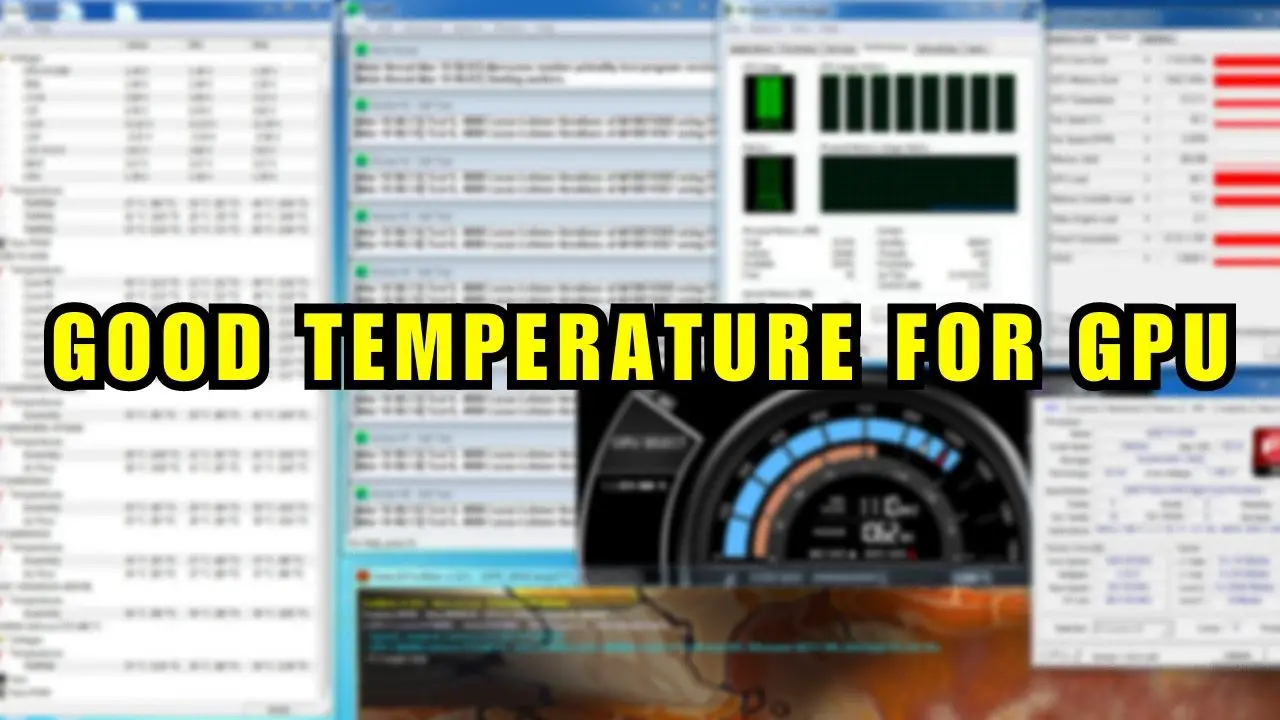The thumb rule states that the GPU should stay under 80 degree Celsius which is 176 degrees Fahrenheit. Even under full load, we can say 75 degree Celsius up and around is quite fine. It can even survive around 95 degree Celsius but has a negative outcome.
The high temperature will reduce the lifespan of the GPU and might even reduce its performance. In case the temperature is beyond these numbers, then the GPU can shut down automatically.
The Boost frequency depends on temperature, so whenever you are playing a game or multitasking on your device, then you need to determine what kind of GPU you need.
So, let’s discuss what is a good temperature for a GPU for gaming.
Why do you need a GPU for gaming?
Graphics and video rendering are among the top applications that are done by GPU. It has gaming capabilities that help you to play 4K virtual reality games, and you can also go through in-game maps without much hassle. You get to experience realistic graphics in every game that you learn to play.
However, to keep the GPU efficiently functioning, you need to maintain the temperature, as excessive pressure can reduce its performance.
The factors that lead to overheating of the GPU are:
Case quality, dust accumulation on GPU, outdated PC, blockage in air flow quality, bottleneck, GPU fan not working, the system not appropriately running, too many GPU-inclusive tasks, etc.
What should be the normal GPU temperature for gaming?
When we speak about high GPU temperature, it indicates that the GPU is going out of its way to provide you with an impeccable experience while gaming. In this case, it goes out of the regular operating temperature to sustain a higher temperature during the long-lasting usage of the device. Thus, it can result in performance issues.
The optimal GPU temperature should range between 65 to 85 degree Celsius, and even during the gaming session, it should not go beyond 85 degrees Celsius. You also need to go through the user manual to understand which digit of the temperature range should be appropriate for the GPU that you are using.
How can you reduce GPU temperature?
If you find the GPU temperature exceeding the limitations mentioned in this article and its performance has also dropped, then you need to bring it back to a safe operating level.
Here are the hacks that you can apply to lower your GPU temperature:
Increase the airflow around your computer
Computers should not only depend on the fans that form the internal components for steady airflow. But, you must also keep the device in a place where it can experience a good flow of air. So, avoid keeping it inside a cabinet.
Also, you should not keep it on your lap while you are playing games or working on it. This tends to conduct the human body temperature and also creates a cooling blockage, and will increase the GPU temperature. To fix this, you can try to use laptop cooling stands as an alternative.
To keep your GPU within the fixed temperature range
Clean the computer and graphics card if dust accumulates. You might find there are restrictions being created in the usage of the GPU and so it has to work harder. Also, dust buildup is known as a hardware killer, which affects sensitive chips and processors. Now, this creates a big problem for the GPU and overheats the components.
Reduce the Room temperature
Reduce the room temperature during hotter days, or if you are living in a hot climate, it has a direct effect on the GPU. So, you need to reduce ambient air temperature, which would directly reduce the GPU temperature as well. You can also try to use external fans or AC to help you work efficiently.
How to monitor your GPU temperature?
Based on the Operating System, you get different tools to monitor the GPU temperature:
Windows 10 or 11: If you are working on Windows 10 or 11, then use its Integrated Performance Monitor to check the GPU temperature. Use CTRL+SHIFT+ESC and navigate to the Performance tab. Look for the label GPU, click on it, and note down the temperature.
Linux and Windows: If you are using Linux and previous Windows devices, you will find Open Hardware Monitor, which is an open-source tool. The tool can be used to track and monitor the GPU temperature. This tool also helps to keep track of hard drives and solid-state drives.
macOS: If you use macOS, then it comes with XRG, an open-source system monitoring tool. You can use this tool to check the system hardware temperature, which includes GPU temperature and other activities.







